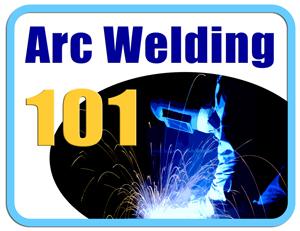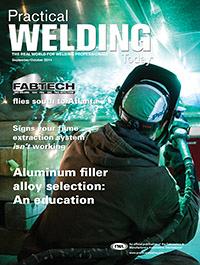- FMA
- The Fabricator
- FABTECH
- Canadian Metalworking
Categories
- Additive Manufacturing
- Aluminum Welding
- Arc Welding
- Assembly and Joining
- Automation and Robotics
- Bending and Forming
- Consumables
- Cutting and Weld Prep
- Electric Vehicles
- En Español
- Finishing
- Hydroforming
- Laser Cutting
- Laser Welding
- Machining
- Manufacturing Software
- Materials Handling
- Metals/Materials
- Oxyfuel Cutting
- Plasma Cutting
- Power Tools
- Punching and Other Holemaking
- Roll Forming
- Safety
- Sawing
- Shearing
- Shop Management
- Testing and Measuring
- Tube and Pipe Fabrication
- Tube and Pipe Production
- Waterjet Cutting
Industry Directory
Webcasts
Podcasts
FAB 40
Advertise
Subscribe
Account Login
Search
Arc Welding 101: Globular-transfer mode for MIG
- By Paul Cameron
- September 23, 2014
- Article
- Arc Welding
Q: I am employed as an AWS D.1.1-qualified welder at a machine shop. I was wondering why you can certify on 75 percent argon/25 percent CO2 when you are not allowed to use a short-circuit transfer on materials over 3/16 in. You need at least 83 percent argon to obtain a spray transfer, yet I passed on a 1-in. test piece. Can you explain this?
A: Your question implies that if your shielding gas mixture is not argon-rich enough to obtain a spray-transfer mode, the only alternative is short-circuit transfer mode. That's just not the case.
When using a 75 percent argon/25 percent CO2 mix, you would not be able to achieve a spray transfer, but you could achieve a globular-transfer mode. It is quite common to complete the test you described (Unlimited Thickness to D1.1) in the gas metal arc welding (GMAW) globular-transfer mode for all positions (3G and 4G) successfully. This is a fairly typical test given in today’s construction industry.
I think you will find that globular-transfer mode is preferred in industries that utilize a 75/25 mix.
As for short-circuit transfer mode, when I mentioned in an earlier article the possibility of incomplete fusion being a concern on materials thicker than 3/16 in., I prefaced that by including the phrase "in certain positions and progressions." Completing an open-root limited-thickness welder qualification in the vertical progression (root down and fill and cover up) is a very common transfer mode used during testing. In fact, a test of that nature—a root pass with short-circuit transfer mode and the fill-and-cover pass in globular-transfer mode—would successfully qualify a welder in two processes (GMAW-S and GMAW) in a single test.
That would be a good welder qualification to have in your wallet.
About the Author

Paul Cameron
Braun Intertec
4210 Highway 14 East
Rochester, MN 55904
About the Publication
subscribe now

The Welder, formerly known as Practical Welding Today, is a showcase of the real people who make the products we use and work with every day. This magazine has served the welding community in North America well for more than 20 years.
start your free subscription- Stay connected from anywhere

Easily access valuable industry resources now with full access to the digital edition of The Fabricator.

Easily access valuable industry resources now with full access to the digital edition of The Welder.

Easily access valuable industry resources now with full access to the digital edition of The Tube and Pipe Journal.
- Podcasting
- Podcast:
- The Fabricator Podcast
- Published:
- 04/16/2024
- Running Time:
- 63:29
In this episode of The Fabricator Podcast, Caleb Chamberlain, co-founder and CEO of OSH Cut, discusses his company’s...
- Trending Articles
Sheffield Forgemasters makes global leap in welding technology

Welding student from Utah to represent the U.S. at WorldSkills 2024

Lincoln Electric announces executive appointments

Lincoln Electric acquires RedViking

Engine-driven welding machines include integrated air compressors

- Industry Events
16th Annual Safety Conference
- April 30 - May 1, 2024
- Elgin,
Pipe and Tube Conference
- May 21 - 22, 2024
- Omaha, NE
World-Class Roll Forming Workshop
- June 5 - 6, 2024
- Louisville, KY
Advanced Laser Application Workshop
- June 25 - 27, 2024
- Novi, MI



























